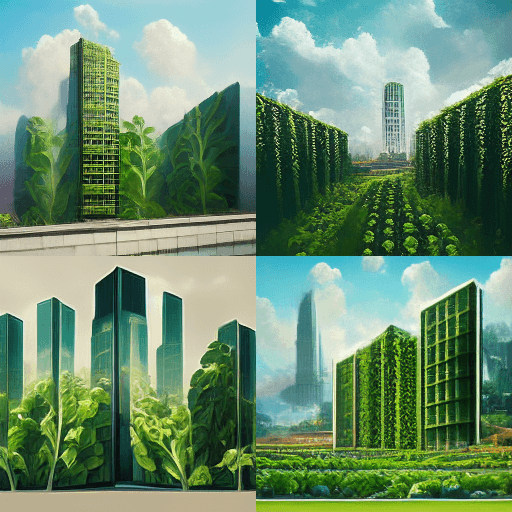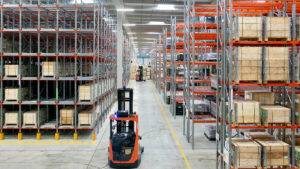Explore urban farming, permaculture, and the benefits of producing food in urban areas. With the right architecture, urban and vertical farming becomes accessible, easy, and productive for individuals and communities worldwide.
In today’s urban landscape, urban and vertical farming initiatives are transforming cityscapes. It’s becoming increasingly common to encounter vegetables and flowers flourishing along streets, vertical gardens adorning walls, or even climbing vines on building facades. While these edible marvels enhance our urban vistas, many still lack a personal connection with such green spaces. Engaging in urban and vertical farming not only beautifies our surroundings but also fosters holistic living, mindfulness, and well-being.
Urban and vertical farming, encompassing practices like permaculture, offer a sustainable approach to food production in both urban and suburban settings. Whether cultivated at home, on community lands, or larger-scale farms, these methods prioritize local food production, addressing rising food insecurity while championing environmental benefits such as air purification, wildlife habitat creation, and waste recycling.
The urgency for urban and vertical farming has never been greater. The World Food Programme (WFP) Executive Director, David Beasley, has cautioned that over 270 million people could face starvation by 2021. Fortunately, the global rise in urban permaculture gardens signals a growing movement combating food insecurity. As more individuals become invested in sustainable agriculture, urban farming’s role in food production becomes pivotal.
The challenges posed by the COVID-19 pandemic disrupted urban-rural dynamics, placing cities under immense strain. With the global population projected to reach 10 billion by 2050 and food production struggles intensified by climate change, innovative farming solutions are imperative. The resilience of certain crops is threatened by climatic shifts, while rapid-spreading pests devastate fields, creating obstacles for farmers worldwide.
Amid these challenges, the potential of urban and vertical farming to address food insecurity becomes evident. Can our urban environments be reimagined to support these agricultural practices? Can modern architecture seamlessly integrate spaces for urban farming and permaculture? This blog explores the current global landscape of urban and vertical farming, showcasing innovative approaches within cities, homes, and architectural designs.
Creating self-sustaining permaculture gardens is feasible in various settings, even within metropolitan areas where space is at a premium. Architectural designs supporting urban and vertical farming must optimize space while ensuring essential resources like water, light, and nutrients are readily available.
Also explore about Transit Hub – Multi Modal Development Project
What is Permaculture?
The term permaculture was coined by Bill Mollison and David Holmgren, Australian academics in the 1970s, from the words “Permanent Agriculture”. This buzzword may sound strange but the concept is quite simple. Permaculture is creating self-sustaining farming that is designed to imitate and nurture the symbiotic relationships found in natural environments. Rather than neat rows of plants, permaculture gardens look more like food forests.
Permaculture is founded on three ethical principles: caring for the earth, caring for the people, and fair sharing of resources. These ethics form the foundation for the design of permaculture and are also found in many traditional societies that practice this farming technique. Permaculture is a lifestyle which looks at land holistically, and involves every animal and plant, taking nothing in the environment for granted.
Each element of permaculture has a functional relationship with the whole system. Plants are inter-planted to control pests, and allowed to flower. Dust and droppings from birds and insects contribute to soil enrichment while wastewater is recycled. Each food cycle is analyzed for its needs and contributions to the system, and they are pieced together to create a closed-loop nutrient and water cycle, as found in the natural environment. Permaculture uses and integrates social structures designed to nurture sustainable farming.
Urban Farming And Permaculture
Cities and urban settings can enjoy urban farming benefits. There is a strong adoption of urban permaculture around the world. Food can be grown organically and space is used maximally. Urban farms aim at making good use of all waste through composting and recycling. Plants reduce carbon in the atmosphere and replenish the oxygen supply both in the air and the soil and provide food and shelter for insects, birds and animals, and the set-up imitates nature to preserve the quality of the soil and the gene pool. Urban farming makes cities more green and sustainable environments.
The principles of permaculture have reshaped urban farming by bringing sustainability. For example, closed nutrient loops boost productivity and wastewater is used in gardens. Permaculture is a mindful lifestyle that aims to eliminate waste by minimizing the loss of nutrients and redirecting wastewater to the land. The wide variety of plants and animals in permaculture gardens keeps residents interested and involved in producing their own food.
Participation in urban farming contributes to one’s well-being. A person’s location has been shown to have an effect on their mental health, not to mention the air pollution in most urban and suburban areas. The relaxing effect of sitting under trees on a sunny day can be amplified by birds, bees and butterflies flying around in the garden. Just working with nature and dirt in the garden has a refreshing effect and restores balance to an individual. Gardens and parks provide places to escape from busy city life and some cities in the world feed a large number of their residents from urban farms.
Vertical Farming
The history of vertical farming dates back to 1915 when American geologist Gilbert Elis Bailey wrote a book called vertical farming. The book primarily talked about using different soil types to grow particular plants. However, the idea of vertical farming came into existence through this book. The first vertical farm came into existence in the 1950s to grow cress plants indoors. Today many biotechnology companies have taken the concept to the next level. Vertical Farming using information and communication technologies is a topic of interest to various technology companies. The below details are referred from an external document published by Infosys on vertical farming.
Below are a few processes employed in vertical farming.
Hydroponics
Hydroponics is the most common type of vertical farming system currently employed. As the name suggests the plants are grown without soil in a nutrient-rich liquid solution. Hydroponics can be understood by the below schematic section. A growth tray is pumped with a nutrient-rich solution on a daily basis for the plant. The essential nutrients used in a Hydroponic system are calcium nitrate, potassium sulphate, potassium nitrate
Aquaponics
Aquaponics has been around for centuries, and it sounds like a buzzword for good reason. To put it simply, aquaponics is a symbiotic relationship among fish, plants and bacteria. It is a hybrid farming technique that combines aquaculture and hydroponics. A couple more buzzwords there! But what do they mean? Aquaculture is the growing of aquatic animals such as fish while hydroponics is a farming technique that grows plants without soil.
A mutually beneficial ecosystem of aquatic life and plants has been known to exist for centuries. Given the right setup, aquaponics can be done almost anywhere. In Asia, swimming fish in paddy rice farms are a common sight, but Chinese records show that this was going on as early as 2,000 years ago.
Aquaponics is a major type of urban farming that is being practised in urban settings all over the world. Architects consider the available space, the climate, lighting conditions and other atmospheric factors when designing urban farming facilities. A closed-loop aquaponics system has three main components:
-
The fish (or any aquatic life) – should be a good species that thrives in recirculating water. Tilapia happens to be a favourite among farmers for its hardiness.
-
The plants – usually plant that don’t need high nutritional input to do well. Herbs and leafy greens such as lettuce and basil thrive in aquaponic systems.
-
The bacteria – ammonia in fish waste is broken down into nitrates and nitrites by naturally occurring bacteria. These salts become essential food for the plants
-
Also explore on Serviced Apartment – An Architect’s comprehensive overview
Aeroponics
Aeroponics utilizes a system of mist and little water, no soil is used in this case as well In the aeroponics systems the plant roots are suspended in the air. The roots are nourished by misting the root zones continuously with a nutrient solution using a fine sprayer.
Incorporating Urban Farming In Architectural Designs
A home can efficiently utilize and recycle its water and organic waste and create a closed nutrient loop in a self-sustaining permaculture garden.
Closed – Loop Nutrient and Water Cycles
A closed-loop system is designed to conserve energy and nothing goes to waste. Permaculture uses closed-loop systems to conserve water and the synergies of food cycles, resulting in self-sustaining farms. Urban farming techniques such as aquaponics and permaculture maintain closed-loop systems where plants and animals have symbiotic relations that recycle nutrients in the system. In an urban home, used water can be used in the garden while organic waste acts as mulching or is recycled through compositing to form organic fertilizer.
Permaculture gardens can be created in any way, so long as the vital survival needs are met. When considering a home garden in urban dwellings, space is usually a constraint. Selecting the right display for your garden can reduce the effort needed to keep it going once you start. There are many designs that one can choose from but we will look at a few of them.
Home Gardens
Having an edible, self-sustaining garden at home not only provides food security and nutritionally healthy meals but is of great benefit to the environment. Before starting new construction projects, architects should consider all factors when designing home gardens.
Requirements of a home garden
Lighting – Plants take sunlight and synthesis it into carbs and sugars, using some for themselves while sending a portion down the roots, to feed bacteria that convert atmospheric Nitrogen into a plant-usable form. The garden must have access to sufficient sunlight to survive.
Water – Water is essential for life. It is the medium through which nutrients and salts are transported in living organisms. As water moves through the soil, it leaves tiny vacuums that enable fresh oxygen-rich air to be pulled in, allowing bacteria to thrive in the soil. Disease-causing pathogens do not survive in oxygen-rich environments, and plants are at lower risk.
Nutrient sources – The food chain always starts with a plant that takes nutrients from the soil and converts it into energy for other organisms. A garden must have a good soil structure with enough organic material to trap water. Food waste forms a good source of nutrients for home gardens and saves the environment from pollution. Landfills
Space/Land – Every home can spare some space for a home garden. An intelligent architect will integrate urban farming in any property with minimal space requirements. The space must be selected keeping other requirements in mind. Urban farming can be practised using various display methods. Common ones include:
-
Vertical Gardens
-
Hanging gardens
-
Green walls
Green Walls, Vertical And Hanging Gardens
Vertical gardens were in existence in antiquity. The Greek historian writer Herodotus, described them when he wrote about the famous Hanging Gardens of Babylon. Today, vertical gardens are maintained by urban farmers all over the world. They provide a refreshing and natural escape from the hectic modern world.
[photos of various types of urban farms and gardens.]
Contemporary architectural designs of vertical farming are nothing short of stunning. The visual enchantment of twisting vines and hanging herbs on walls and balconies or in a backyard brings an element of living beauty into the havoc of urban architecture.
Urban Farming Benefits
Urban Farming benefits are innumerable. Besides not contaminating the soil and providing food security, there are many upsides to producing food locally in urban and suburban environments.
Food security
Urban farming promotes better use of land and increases food security for a skyrocketing world population, even as arable land diminishes. Urban production of simple foods like vegetables can help reduce the dependence on agricultural land and imports, resulting in lower soil pollution and increase food for urban residents.
Economic importance
Another urban farming benefit is the economy. It expands a city’s economic activities through the production and sale of urban farming produce. Packaging, selling and distribution present job opportunities for residents, and a healthy community is a reliable workforce that further builds the economy.
Social importance and environmental awareness
Urban gardening creates opportunities for people to interact and socialize, which enhances a society’s emotional and social welfare. A sense of communal involvement is created along with environmental awareness.
Improve human well-being and promotes healthy living
“Horticultural therapy” is an aspect of gardening activities that are good for the heart, builds self-esteem, reduces stress, and blood pressure creates happiness and strength, not to mention a boost in Vitamin D as a result of working in the sun. Urban farming assures the availability of healthy foods that are predominantly grown organically, and free of artificial chemicals.
Benefits the environment
Urban farming, through photosynthesis in plants, reduces the effects of carbon by reducing emissions from machinery and transport systems. As an alternative way of producing food, it frees agricultural land and gives it time to regenerate naturally. The absence of artificial waste, fertilizers and other chemicals prevents pollution of the soil.
Vital practical lessons for kids, boosting their interest
Kids can increase their stock of skills and knowledge by connecting their school work with practical experience. The opportunity to try out things at home for young minds who may later develop further interest in agriculture, and pursue related courses in college.
Learn about Apartment Plan – Factors for design of residential apartment





